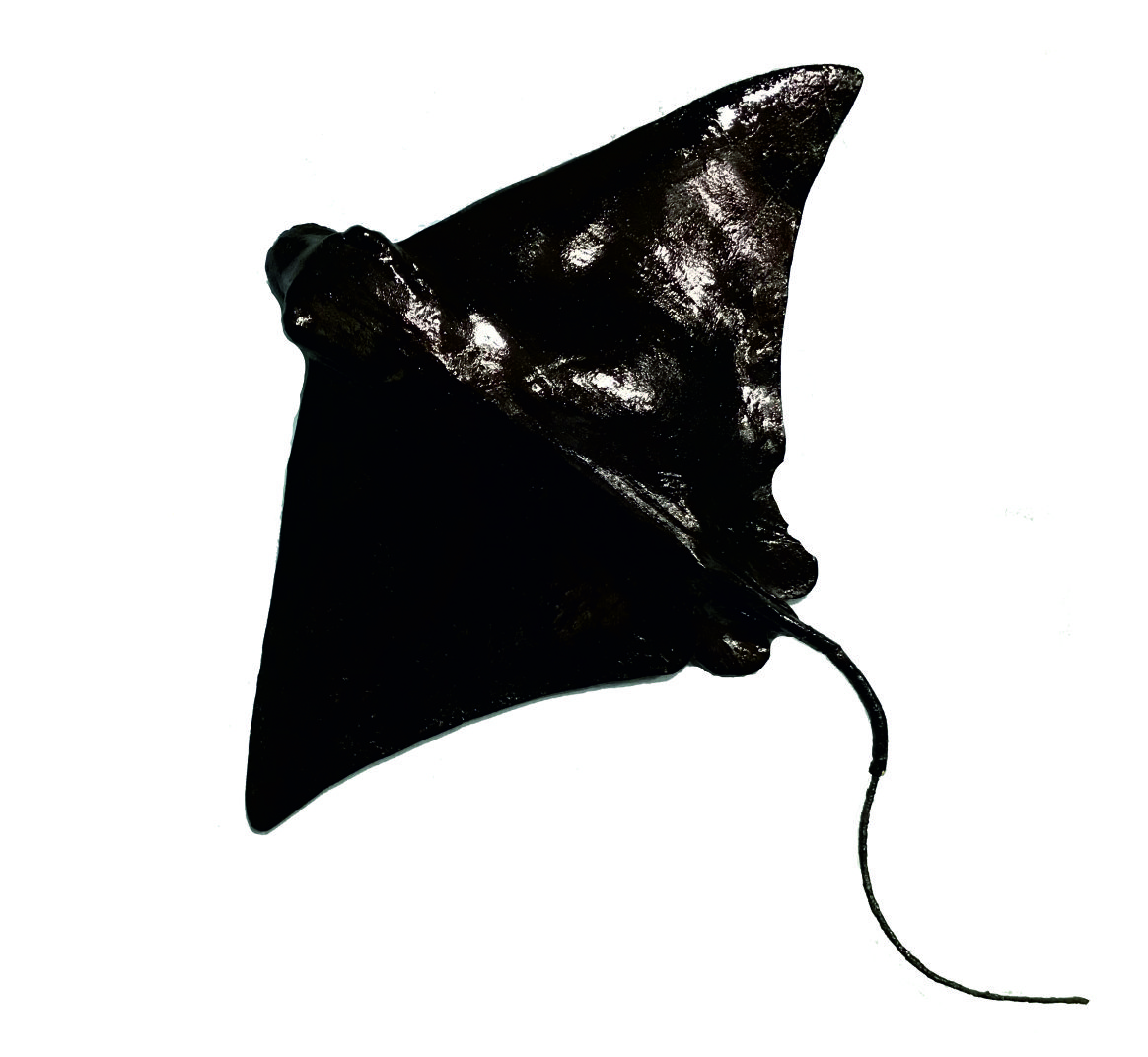
Spotted eagle ray
(Aetobatus narinari)
| Class: | Chondrichthyes |
| Order: | Myliobatiformes |
| Family: | Myliobatidae |

Distribution and habitat
- Found globally in tropical regions, including the Atlantic, Pacific and Indian Oceans.
- It is a reef associated ray and is commonly found in beach areas as well as estuaries and mangrove swamps.
- It spends most of its time around 60 m deep but may dive up 80 m deep.
About the fish
- It is a cartilaginous fish belonging to eagle ray family.
- It has a flattened snout that protrudes from the pectoral disc, that is approximately twice as wide as it is long.
- The pectoral fins make up a majority of the pectoral disc and are acutely angled at the lateral tips.
- The ventral surface is white and the dorsal surface is either blue or black and peppered with white spots and rings.
- It has rounded pelvic fins and a very small dorsal fin but lacks a caudal fin all together.
- It possesses stinging spines, which can be found behind the dorsal fin, and a slender whip-like tail.
- Maximum Size – Disc width 180 – 330 cm Weight – 230 kg
- It has excellent vision and olfactory perception, in addition, electrosensory organs Ampullae of Lorenzini is also present.
- It preys on crustaceans, molluscs, echinoderms, polychaete worms and smaller fish as well.
- Spotted eagle rays are capable of stinging humans with their venomous spine, which occasionally results in death.
- Sexual maturity – 4 and 6 years of age.
- Gestation Period – approximately 8 – 12 months,
- Litter size – 1 to 4 (generally 2 pups per pregnancy)
- Itis ovoviviparous, as its eggs develop inside the uterus and hatch within the mother and are nourished by a yolk sac rather than through a placental connection with the mother.
- It is known to jump high out of the water, a behaviour known as breaching. It is hypothesized that breaching is done to avoid predation and and remove ventrally attached parasites.
- Females have been observed giving birth during breaching, as the force of landing back in the water is thought to help push the pups out of the uterus.
